- Gates Main
- Jaffa Gate
- Zion Gate
- Dung Gate
- East Gate (also known as Golden Gate)
- Lion’s Gate
- Herod’s Gate
- Damascus Gate
- New Gate
Where is Jaffa Gate located?
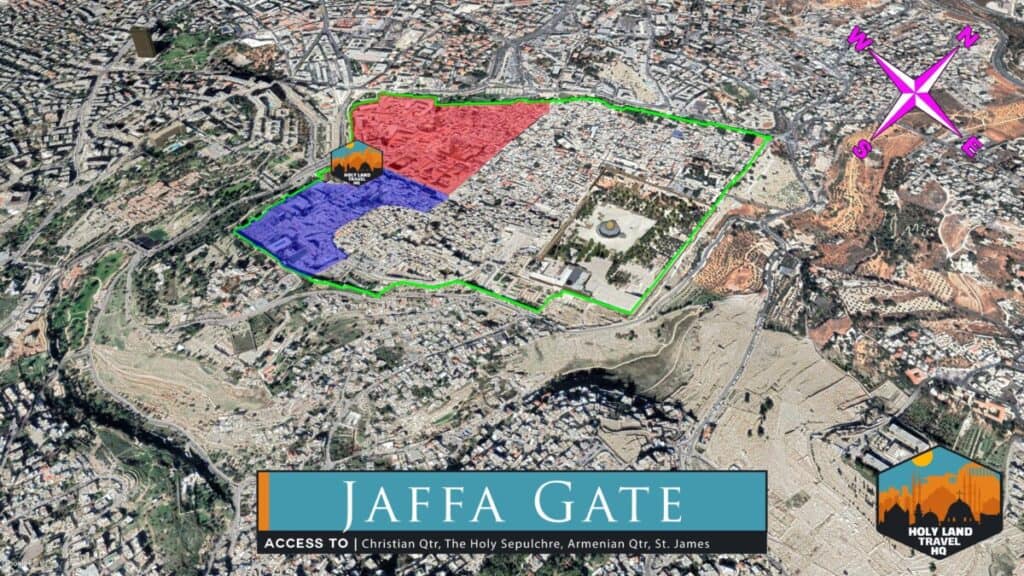
Jaffa Gate is located on the western side of the Old City. It provides access from the Mamilla Mall and West Jerusalem to the Christian Quarter and the Armenian Quarter.
What are the Hebrew and Muslim names for Jaffa Gate?
The Hebrew name for Jaffa gate is Sha’ar Yaffo (שַׁעַר יַפֺו). Or Jaffa Gate. The gate’s name comes from the fact that it points towards Jaffa, or what today is called Tel-Aviv Yafo.
Muslims call the gate Bab al-Khalil (باب الخليل), or the ‘Door of the Friend.’ Khalil is the name Muslims have for Hebron. Hebron is important to Muslims because it is where Abraham is believed to have been buried. They call Abraham the Friend of God. Though the road leading out of Jaffa Gate headed west to Jaffa, it also intersected with the north-south road that led south to Hebron.
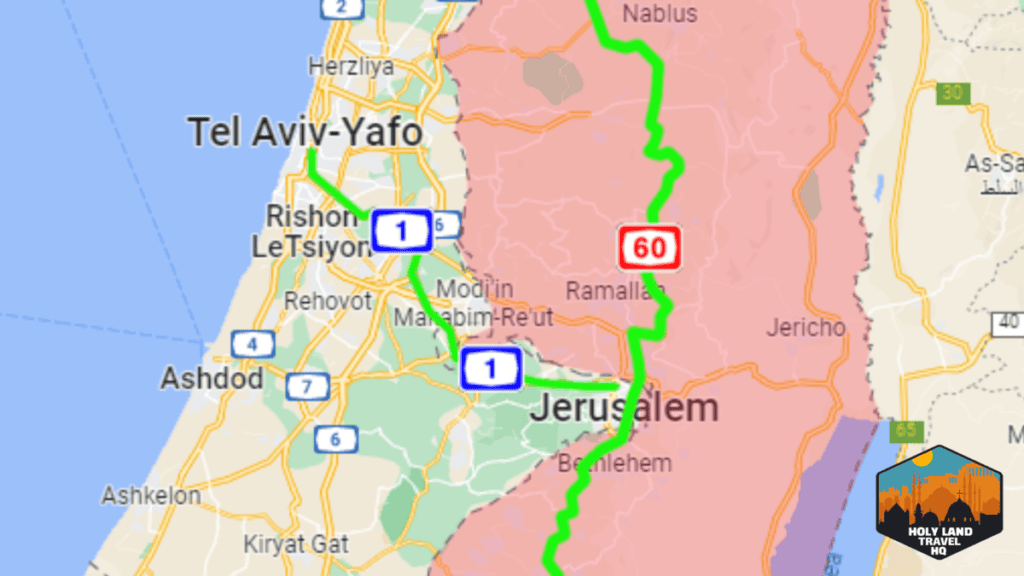
Today if you turn north from Jaffa Gate you will find Jaffa Road as well as Highway 1 which leads to Tel Aviv – Yafo. If you turn south from Jaffa Gate, you will find Highway 60 which is the main North-South highway through Israel and the West Bank. It passes through Hebron on its way down to Arad.
History of Jaffa Gate.
The current gate was built between 1536 and 1537 by the Ottomans at the direction of Suleiman the Magnificent. During the Crusader period, another gate stood close by that is referred to in the Crusader Cambrai map as The Gate of David. It had this name because both the tower of David with its moat was located next to the gate, and the road heading east into the city from the gate was named David Street. Today the main street that leads into the Old City market area is still named David Street.
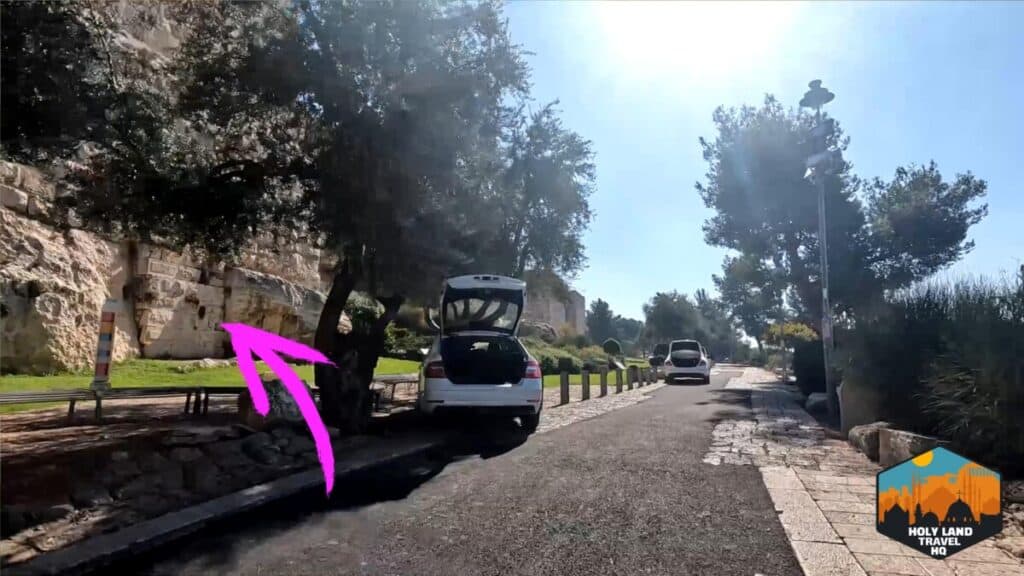
The walls that we see today next to Jaffa gate were built by the Ottomans in the 1530s, however, the portion of the wall leading south towards Mount Zion, was first laid by the Hasmoneans in the 2nd Century BC as the city expanded west. You can see remnants of these walls in the foundation about 300 yards south of Jaffa gate.
Jaffa Gate from King Herod to the Crusaders.
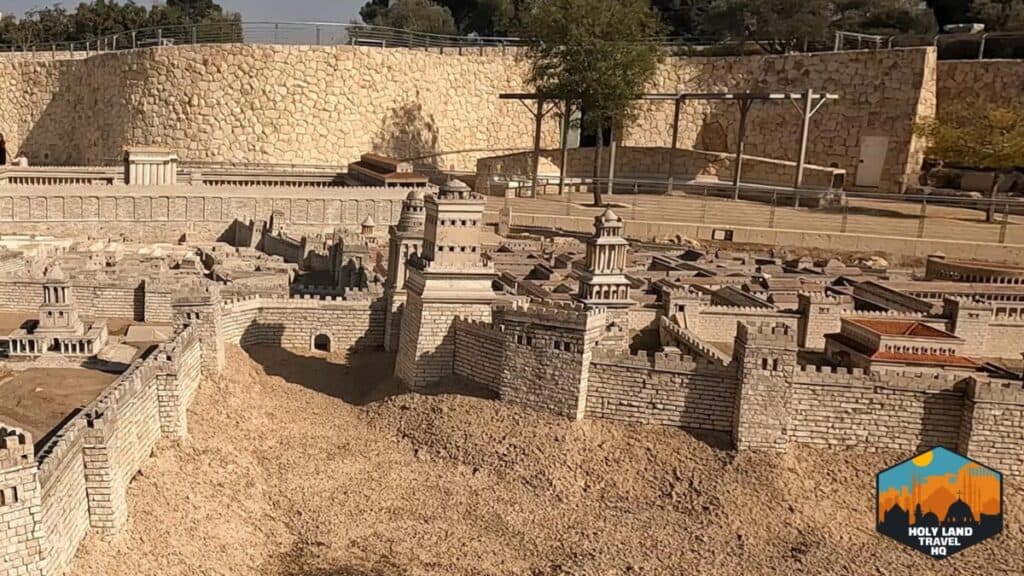
the north part of his palace on the right.
King Herod built three towers near Jaffa Gate where his Palace was located. Today this site is known as the Citadel or just The Tower of David. After Jerusalem was sacked by the Romans in 70 AD, the Palace was converted into a camp for the Roman soldiers. When the Arabs conquered the city in the 7th Century, they turned the site into a fortress. After the Crusaders took the city in the 11th Century, they rebuilt the fortress, hence the reason why it is called the Citadel today. The Crusaders built a gate next to the Fortress and called it David’s Gate.
Jaffa Gate from the Muslims to the Ottomans.
In the 12th Century, Saladin recaptured the city for the Muslims. It was the Ayyubid sultan Al-Mu’assam who destroyed the walls and gates during his conquest of the city in the 13th Century. Shortly after that the Mamlukes took the city, but left the walls and gates destroyed in case the Crusaders returned and used the fortifications to protect themselves. In the 16th Century the Ottomans gained control of Jerusalem and they embarked on a robust project to rebuild the walls and gates. Almost all of the gates we see today are a result of this project.
Jaffa Gate from the Ottomans to Present.
In 1898, the wall between Jaffa Gate and the Tower of David was removed and a portion of the moat was filled in for the arrival of Kaiser Wilhelm II, the last Emperor of Germany. He was visiting the city for the dedication of the German-built Church of the Redeemer. The wall was removed because the Kaiser wanted to enter the city with his entourage on horseback with his banners raised.

In 1909, the Ottomans built a clock tower on top of the gate to celebrate Sultan Abdul Hamid II. The tower and the shops around the gate were removed in 1921 by the British governor in order to restore the ancient appeal of the gates and walls.
There are stories about the pockmarks on the top of the gate that say they are a result of the 1948 War of Independence. However, many historical photos of the gate taken prior to the war show the presence of these pockmarks. The 1948 war no doubt added to what was already there though.
Design of Jaffa Gate.
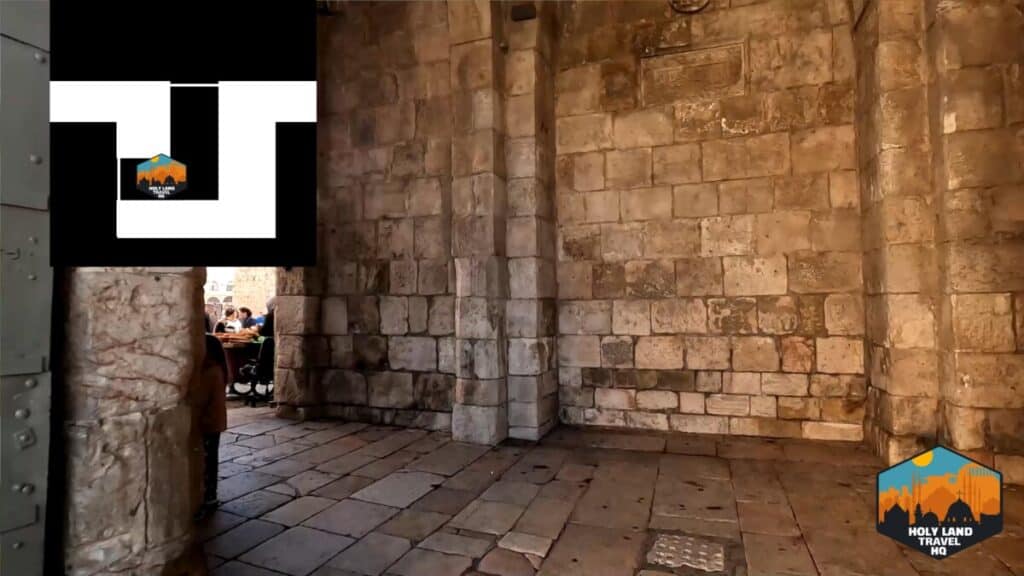
Jaffa Gate features an L-shape or 90-degree turn layout like many of the gates that the Ottomans built. The slits above the gate allow defenders to observe and shoot at attackers. An enclosed balcony called a mashikuli juts out from the top of the rampart on the gate. The open channels at the bottom of the balcony allow defenders to drop hot oil on attackers. Sometimes they might even drop snakes or excrement.
The gate has four inscriptions on it. The first is above the entrance and praises Suleiman the Magnificent. The second is to the left of the gate on the wall and is similar in tone to the first. Both of these were placed during the gate’s original construction.
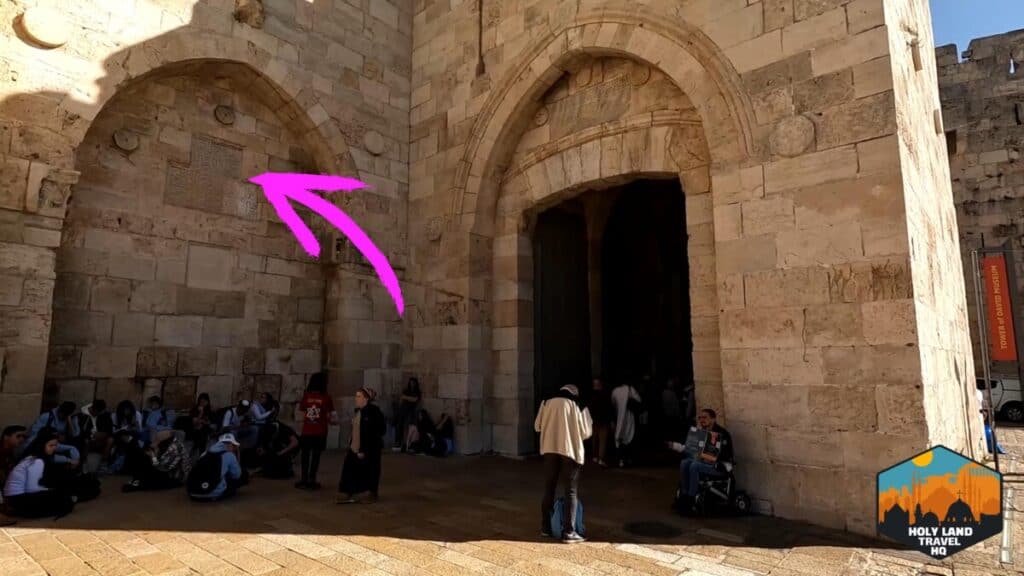
In 1970 a third inscription was added below the second inscription stating the repairs to the walls were complete. After the 1967 6-Day War, Israel gained control of the Old City and began making repairs to the city as a whole. The 1970 inscription also references Nehemiah 4:1 which tells how the Army of Samaria became angered and ridiculed the Jews for rebuilding the wall under Nehemiah’s governorship.
“When Sanballat heard that we were rebuilding the wall, he became angry and was greatly incensed. He ridiculed the Jews.” – Nehemiah 4:1
The fourth inscription is inside the gatehouse. It merely states the Muslim declaration that there is no god other than Allah. But then it finishes by saying “Ibrahim is his friend.”
References:
https://dannythedigger.com/jaffa-gate
https://historicalsitesinisrael.com/en/jaffa-gate-jerusalem
https://www.biblewalks.com/JaffaGate
Barry, John D., David Bomar, Derek R. Brown, Rachel Klippenstein, Douglas Mangum, Carrie Sinclair Wolcott, Lazarus Wentz, Elliot Ritzema, and Wendy Widder, eds. The Lexham Bible Dictionary. Bellingham, WA: Lexham Press, 2016.
Matev, Ami. “One Square Kilometer: The Old City – A Guide to the Sites. 2015. Old City Press.

